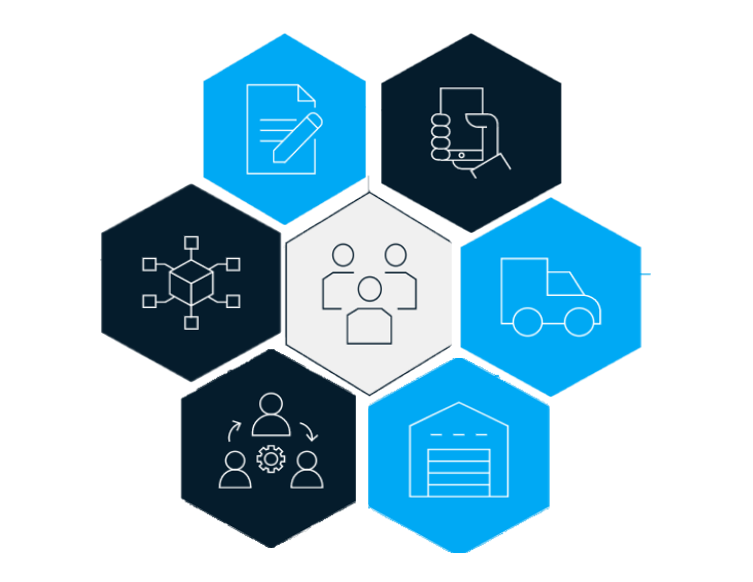With the upcoming trend, we are entering the new world, which should be known as a phygital “combination of both physical and digital” where there is not a physical world or digital world in retail, but rather a completely connected one. Nowadays, a customer after placing an order expects a fast and timely delivery with excellent and convenient service. As per research done by Mckinsey, the primary factor which makes the retailer different from others is the service they provide to their consumers. As more of us are carrying out our shopping by clicking especially notably after the pandemic, e-commerce sales have rosed to a great extent which requires an efficient omnichannel distribution. According to research, the total value of omnichannel distribution will continue to grow 7 percent every year, from $600 billion in 2019 to $840 billion by 2025. The omnichannel distribution although drives up complexity, labor, and inventory costs but can fulfill the needs of people with small orders and same-day delivery and the stores with bulk orders synchronically. To excel in omnichannel distribution a company needs to focus on seven supply chain building blocks to combine best practices with digital innovation.
Customer Centric Approach is the most crucial point to design an omnichannel distribution to formulate an effective supply chain strategy, to best prepare for the supply chain disruptions in order to mitigate the risks and to deliver the best to the customers with an excellent service which can make all the difference.
End-to-end (E2E) planning and information flow is required to ensure right delivery at the right place and right time. Demand planning is essential to know the demand signal in the omnichannel distribution, to manage the inventory so that right quantity of products are available to fulfill the customer demand in stores, Distribution Centers and with partners.
Digitization and process automation is required to deploy new technological methods for an optimized omnichannel supply chain. The data from different platforms and systems can ne used to integrate all the partners involved in the supply chain and for better forecasting of demand, relevant analyses and better decision making. Also, with the use of cutting edge technology the omnichannel distribution network runs in an dynamic and economical manner.
Network and Ecosystem of the future to figure out if the omnichannel distribution network designed is beneficial and to know the right composition of distribution centers, new node types and partner locations. Also, to certify if each channel has its own inventory or if it is required to implement the model of sharing inventory with other companies.
Omnichannel fulfillment: Transportation and logistics service provider (LSP) management important key factor to deliver products on time. The company should ensure to manage the transportation operation efficiently keeping the total transportation cost under control. Finding right logistic partners governing logistic services
Operating model and change management involves designing of supply chain process to achieve omnichannel optimization, integration of digitization in the process. Adjusting of organizational structure to adapt the cross channel and extract benefit from it and along with it adapt the new culture in the organization to have the same mindset towards the omnichannel strategy. Also, measuring the performance of end to end supply chain to check for any divergence is also an important factor in achieving efficient omnichannel distribution supply chain model.
Omnichannel fulfilment: Node operations another key factor to decide, whether the warehouse management should be in-house or whether it should be outsourced. It is also important to manage and track the flow of return network and how to enable the whole downstream supply chain for omnichannel
In this new Era, Retailers and brand are required to centre their logistic operations around their end customers in order to fulfil their needs and this is possible only through omnichannel Distribution.
We at Godamwale believe that more businesses will move from either traditional offline retail or only ecommerce mode of business to omnichannel network since both the methods have their own advantage and reach based on the customer base and location. The e-commerce businesses are taking lead in Tier 1 cities but offline retail is still a dominant mode in Tier 2 and Tier 3 cities.
The warehousing network, capabilities of fulfilment at these facilities and technology to track and trace the inventory movement will be the backbone of the omnichannel distribution. The companies will need to adopt a fixed + flexible warehousing approach to maximise their reach, distribution and reduce the delivery time. The best way to approach is to maintain major hubs with a fixed warehousing model where there is more complex fulfilment or need control over the operations. But these fixed warehouses will have their limitation to expand the distribution network and may result in delayed delivery time. On demand warehousing becomes a game changer when coupled with fixed warehousing . The on demand warehousing allows companies to add or reduce warehousing space with change in the demand without any long term agreement and commitment on tenure. The pay per use warehousing helps companies to build an agile distribution network, get near to the customer base and reduce the delivery time. It helps reduce middle-mile transportation costs and develop warehousing and fulfilment capabilities in every market.
We at Godamwale help companies develop a smart, integrated scalable distribution network with our on demand flexible warehousing model. Godamwale with network of on demand warehousing in 120+ cities of india, a team of expert to handle complex operations, a simple yet powerful inventory management, track and trace platform is helping companies to build a Fixed+ flexible warehousing and ecommerce fulfillment network to expand their omnichannel network not only in major cities but also help them penetrate in Tier2 and tier 3 cities of india.
This blog is written by Mriganka Garg, currently pursuing MBA from IIM Raipur .

